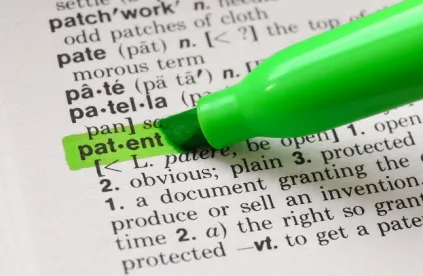Reinforcing the impact of the Supreme Court of the United States’ 2019 decision in Thryv v. Click-to-Call, the US Court of Appeals for the Federal Circuit reiterated that the Patent Trial and Appeal Board’s threshold determination as to whether it will institute a proceeding under the America Invents Act (AIA), in this instance a Covered Business Method (CBM) review, is not appealable because it is closely tied to the institution decision. cxLoyalty, Inc. v. Maritz Holdings Inc., Case Nos. 20-1307, -1309 (Fed. Cir. Feb. 8, 2021) (Prost, C.J.)
cxLoyalty petitioned for CBM review of a patent owned by Maritz. The patent relates to a system and method for permitting a loyalty program customer to redeem loyalty points for rewards offered by vendors without human intervention. A participant (i.e., a customer) uses a graphical user interface (GUI) to communicate with a web-based vendor system (e.g., an airline reservation system). An application programming interface (API) facilitates information transfer between the GUI and the vendor system.
The Board instituted CBM review and concluded that the original claims in the patent were ineligible for patenting under 35 USC § 101, but that the proposed substitute claims were patent eligible. The Board found the original and substitute claims amounted “to a fundamental economic practice long prevalent in commerce” and therefore were directed to abstract ideas. However, the Board found that, unlike the original claims, the substitute claims contained an inventive concept. cxLoyalty appealed the Board’s ruling as to the substitute claims. Maritz cross-appealed the Board’s determination that the patent was eligible for CBM review and the Board’s ruling as to the original claims.
The Federal Circuit quickly disposed of Maritz’s challenge to the CBM-eligibility of the patent, citing to its 2020 SIPCO v. Emerson decision. In SIPCO, the Court held that Thryv made clear that the Board’s threshold determination as to whether a patent qualifies for CBM review is a non-appealable decision. Whether CBM review is an available mechanism is conditioned on whether the patent qualifies, since patents that are directed to “technological inventions” are excluded from CBM review. Because the determination of whether a patent qualifies for CBM review is inextricably tied to the decision to institute, it is not appealable. SIPCO was decided after briefing but before oral argument of this case. Indeed, Maritz’s counsel acknowledged during oral argument that SIPCO foreclosed Maritz’s CBM eligibility challenge.
As to the merits, the Federal Circuit agreed with the Board that both the original and substitute claims were directed to patent-ineligible subject matter under § 101. Maritz argued that the claim features of permitting a participant to redeem points for rewards “without knowing that the actual transaction is a currency transaction at less than the perceived price” saved the claims from being merely abstract ideas. The Court disagreed. After applying the Alice/Mayo two-step analysis, the Court found that 1) the claims were directed to abstract ideas, and 2) the claims merely recited generic and conventional computer components or functionality for carrying out the abstract ideas. At step one, the Court found that the claims were directed to facilitating or brokering a commercial transaction between a purchaser using a first form of value (i.e., a rewards program using points) and a seller transacting in a second form of value (i.e., a vendor system transacting purchases in currency), but noted that humans had long intermediated such transactions by collecting and relying on the same information. Turning to step two, the Court found that the claims merely applied the abstract idea using conventional techniques and generic components. The Court noted that the hidden transaction amount feature was not claimed and would not have saved the claims anyway. Maritz also offered expert testimony under step two that the claims solved a technological problem, but the Court found that neither such a purported problem nor a recitation to a new, technological solution, and that the recited solution relied on conventional techniques.
The Court therefore dismissed Maritz’s CBM eligibility challenge, affirmed the Board’s determination as to the original claims, and reversed the Board’s determination as to the proposed substitute claims, finding all original and substitute claims patent ineligible.



 />i
/>i

